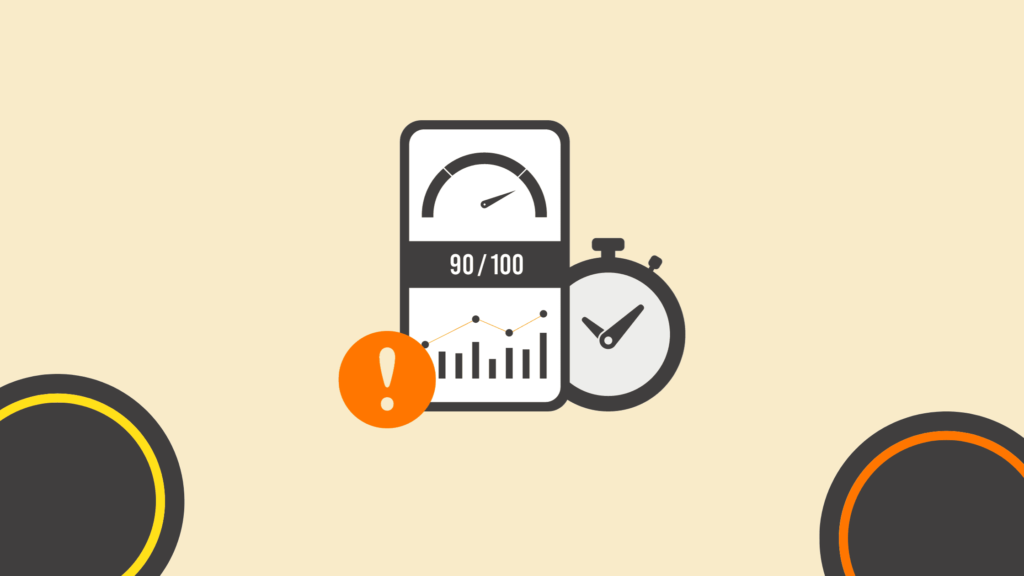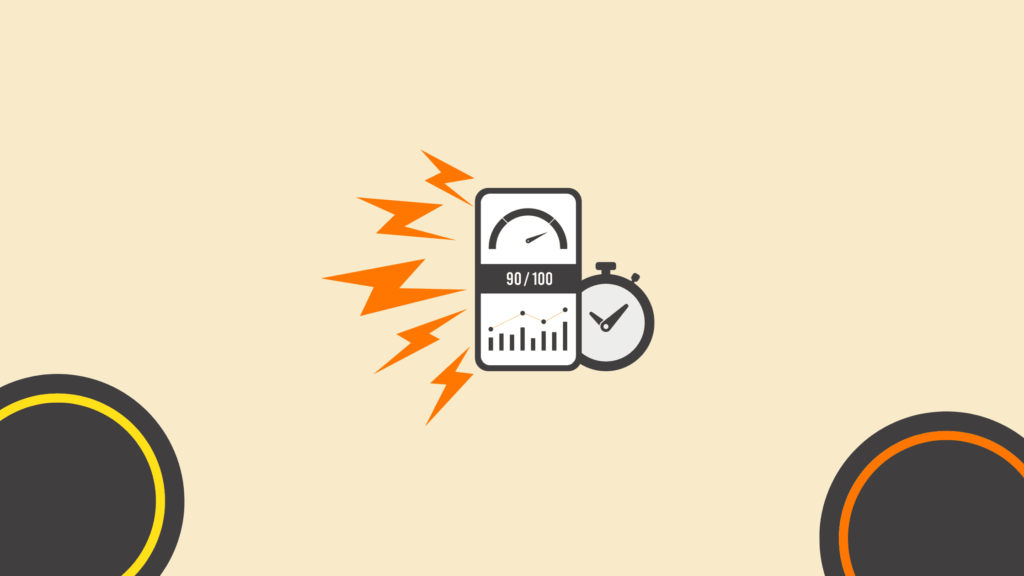Demystifying Google’s Core Web Vitals [Simple SEO & UX Wins]
You can have the best content in the world, but if your site feels slow, jumpy, or unresponsive, people will leave before they even read it.
That is exactly what Google’s Core Web Vitals are trying to measure.
Core Web Vitals are three experience metrics that look at how quickly the main content loads (LCP), how responsive your pages feel (INP), and how stable the layout is while loading (CLS).
Google still uses them as a key part of how it evaluates page experience in Search: pages that feel fast and stable tend to perform better than similar pages that feel slow and frustrating.
In this updated guide, we will demystify Core Web Vitals in plain language, show what “good” scores look like, walk through how to measure your pages, and give you practical tweaks to improve LCP, INP and CLS without needing a full rebuild. You will also see how these metrics fit into SEO in 2025 and how tools like StoryLab.ai can help you prioritise and communicate the right fixes.
Chapters
- Why Are Google’s Core Web Vitals Important?
- The Ultimate Guide to Core Web Vitals
- 5 Things You Can Do that Have the Most Impact on Core Web Vitals
- What Are Google’s Core Web Vitals (In Plain English)?
- Why Core Web Vitals Matter For SEO & Conversions
- Core Web Vitals: What Has Changed?
- How To Measure Your Core Web Vitals
- Practical Fixes For Each Core Web Vital
- Simple Checklist: Improving Core Web Vitals Step By Step
- How StoryLab.ai Can Help With Core Web Vitals Work
- FAQ: Core Web Vitals & SEO
- Conclusion

Why Are Google’s Core Web Vitals Important?
Before delving into the intricacies of Core Web Vitals and their relation to SEO, let’s begin by understanding why they hold such significance in the digital realm.
Enhancing User Experience
At the heart of Core Web Vitals lies the fundamental goal of enhancing user experience. Google recognizes that user satisfaction is closely linked to how fast a web page loads and how smoothly it functions. Therefore, Core Web Vitals focus on metrics directly impacting a user’s perception of a website’s performance.
Google’s Ranking Algorithm
Google has always prioritized delivering the most relevant and user-friendly search results. To achieve this, it continually refines its ranking algorithm. In 2020, Google announced that Core Web Vitals would become a ranking factor, indicating that websites with superior performance metrics stand a better chance of ranking higher in search results.
Mobile-First Indexing
With the increasing prevalence of mobile devices for internet access, Google has adopted a mobile-first indexing approach. This indicates that Google ranks and indexes websites mainly using their mobile versions. Core Web Vitals are now essential for both desktop and mobile SEO as a result.
Competitive Advantage
Websites that excel in Core Web Vitals gain a competitive advantage. A fast and user-friendly website improves user retention and conversion rates and sets your site apart from competitors. A better-performing webpage can be the differentiating factor in a crowded digital landscape.
Understanding Core Web Vitals and How they Affect SEO

Core web vitals explanation and their profound influence on SEO is pivotal for anyone navigating the digital landscape. These essential metrics, introduced by Google, are the yardstick by which a website’s performance and user experience are measured. Core Web Vitals, comprising Largest Contentful Paint (LCP), First Input Delay (FID), and Cumulative Layout Shift (CLS), are designed to evaluate the loading speed, interactivity, and visual stability of web pages. Their impact on SEO cannot be overstated, as they have become an integral part of Google’s ranking algorithm. Websites that excel in these vital performance indicators stand to benefit from higher search engine rankings, as they contribute significantly to the overall Page Experience score. In essence, comprehending Core Web Vitals is akin to unlocking the keys to SEO success in an increasingly competitive online environment where user experience reigns supreme.
Core Web Vitals directly influence your website’s SEO success by:
Affecting Rankings: Google uses Core Web Vitals as a ranking factor, and websites that perform well in these metrics have a higher chance of ranking in search results.
Improving User Experience: Websites prioritizing Core Web Vitals provide a better user experience, leading to higher user retention, lower bounce rates, and increased conversions.
Staying Competitive: As more websites optimize for Core Web Vitals, failing can put your site at a competitive disadvantage.
The Ultimate Guide to Core Web Vitals
Navigating the intricacies of Core Web Vitals is a crucial step toward achieving SEO excellence. To embark on this journey, following a comprehensive guide outlining the key strategies and steps is essential. The ultimate guide to Core Web Vitals begins with consistently monitoring your website’s performance through tools like Google PageSpeed Insights and Google Search Console. Identifying critical pages that receive the most traffic and contribute significantly to your business goals is the next strategic move. Once these foundational steps are in place, optimizing Core Web Vitals involves a multi-faceted approach. Implementing lazy loading for non-essential resources, such as images and videos, can significantly enhance the Largest Contentful Paint (LCP), ensuring swift loading of critical content. For First Input Delay (FID) and Cumulative Layout Shift (CLS) improvements, optimizing above-the-fold rendering by minimizing render-blocking resources and leveraging browser caching is essential.
To achieve SEO success through Core Web Vitals, it’s essential to have a comprehensive strategy. Here’s an ultimate guide that breaks down the steps you need to take:
Regular Monitoring
The first step in optimizing for Core Web Vitals is consistently monitoring your website’s performance. Google offers tools like Google PageSpeed Insights and Google Search Console that provide insights into your Core Web Vitals scores. Regular monitoring allows you to identify issues and track improvements over time.
Identify Critical Pages
Not all pages on your website are equally important for SEO techniques. Focus on optimizing Core Web Vitals for the pages that receive the most traffic and contribute significantly to your business goals. These may include your homepage, product pages, and landing pages.
5 Things You Can Do that Have the Most Impact on Core Web Vitals

To further demystify Core Web Vitals and guide you toward SEO success, let’s explore five specific actions that can have a substantial impact on these vital performance metrics.
1. Lazy Loading
Lazy loading is a technique that delays the loading of non-essential resources until they are needed. This is especially effective for optimizing LCP, as it ensures that the most critical content loads quickly, improving the user experience.
How to Implement Lazy Loading:
Use the HTML “loading” attribute: Specify “loading=’lazy'” for images and iframes to enable native lazy loading in modern browsers.
JavaScript libraries: Utilize JavaScript libraries like LazyLoad or Intersection Observer to implement lazy loading for custom elements and dynamic content.
Content management systems (CMS): Many CMS platforms have built-in lazy loading features or plugins that make implementation easier.
2. Optimize Above-the-Fold Rendering
Above-the-fold content refers to the part of the web page that is initially visible without scrolling. Optimizing this content can significantly impact LCP, ensuring a quick and engaging user experience.
Optimization Strategies for Above-the-Fold Rendering:
Minimize render-blocking resources: Identify and reduce render-blocking JavaScript and CSS that may delay the rendering of above-the-fold content.
Prioritize critical CSS: Inline critical CSS to ensure that the most important styles load quickly. Load non-essential styles asynchronously.
Leverage browser caching: Set up caching headers to allow browsers to store resources locally, reducing the need for repeated downloads.
3. Caching
Caching involves storing static resources like images, scripts, and stylesheets on the user’s device or intermediate servers. This reduces loading times and can positively impact LCP and FID.
Effective Caching Strategies:
Browser caching: Configure your server to provide appropriate caching headers (e.g., Expires, Cache-Control) for static assets. This allows browsers to cache resources locally for faster subsequent page loads.
Content Delivery Networks (CDNs): Use CDNs to cache and serve static assets from servers located closer to the user, reducing latency and improving loading times.
Cache purging: Implement cache purging mechanisms to ensure that updated content is delivered to users promptly without causing cache-related issues.
4. Image Optimization
Images often contribute significantly to page size and can impact LCP and CLS. Properly optimizing images is crucial for Core Web Vitals.
Image Optimization Best Practices:
Choose the right format: Use modern image formats like WebP, which offer better compression and quality compared to older formats like JPEG and PNG.
Compress images: Use image compression tools to reduce file sizes while maintaining visual quality.
Specify dimensions: Always include width and height attributes in image tags to reserve space and prevent layout shifts.
Implement responsive images: Serve different image sizes based on the user’s device and screen resolution to reduce unnecessary data transfer.
5. Optimize Delivery of JavaScript and CSS
Efficiently delivering JavaScript and CSS resources can positively impact FID and CLS. Minimizing file sizes and optimizing resource delivery are key.
Strategies for Optimizing JavaScript and CSS Delivery:
Minimize and concatenate: Minimize the number of separate JavaScript and CSS files and combine them into single files to reduce HTTP requests.
Use asynchronous loading: Load non-essential scripts asynchronously to prevent them from blocking the main thread during page load.
Defer non-critical scripts: Defer the execution of non-essential JavaScript until after the main content has loaded to prioritize interactivity.
What Are Google’s Core Web Vitals (In Plain English)?
Core Web Vitals are three metrics that capture how your site feels to real users:
Largest Contentful Paint (LCP) – how long it takes for the main content to appear (for example the hero image or big heading).
Interaction to Next Paint (INP) – how quickly the page responds when people click, tap, or type. This replaced First Input Delay (FID) in 2024.
Cumulative Layout Shift (CLS) – how much things jump around as the page loads (annoying button shifts, moving images, etc.).
Google’s recommended targets for a “good” experience:
- LCP: under 2.5 seconds
- INP: under 200 ms
- CLS: under 0.1
If most of your real users (based on Chrome data) experience your pages within those thresholds, Google considers your Core Web Vitals “good”.
Why Core Web Vitals Matter For SEO & Conversions
Google’s documentation is pretty clear: Core Web Vitals are part of the page experience signals that its ranking systems try to reward.
They are not the only factor (content quality, intent match, links etc. still matter more), but they can act as strong tie-breakers when pages are otherwise similar.
Beyond rankings, improvements in Core Web Vitals almost always show up in business metrics:
- Faster loads (better LCP) → higher engagement, lower bounce rates, better conversion.
- More responsive pages (better INP) → smoother forms and checkouts, fewer drop-offs.
- Stable layouts (better CLS) → less frustration, fewer mis-taps (and angry users).
- So Core Web Vitals are really about UX first, SEO second – and that is a nice alignment to have.
Core Web Vitals: What Has Changed?

A few important updates you can weave into the article so it stays current:
INP fully replaced FID
Since March 2024, Interaction to Next Paint (INP) is the official responsiveness metric in Core Web Vitals; FID is deprecated.
Page experience is rolled into core ranking systems
Google no longer treats “page experience” as a single standalone ranking signal, but states that aspects such as Core Web Vitals still align with what its core systems reward.
Mobile experience continues to dominate
Google increasingly evaluates sites from a mobile-first perspective, so poor Core Web Vitals on mobile can hurt even if desktop looks fine.
In other words: CWV won’t magically rank bad content, but bad CWV can absolutely hold back good content, especially on mobile.
How To Measure Your Core Web Vitals
You already mention PageSpeed Insights or Lighthouse most likely. I’d extend that with a simple measurement stack.
1. Google Search Console – Core Web Vitals report
Shows real-user (field) data from the Chrome User Experience (CrUX) dataset.
Groups URLs by status: Good, Needs improvement, Poor for both mobile and desktop.
Great for seeing patterns across your whole site.
2. PageSpeed Insights
Tests a single page.
Shows both field data (if available) and lab data from Lighthouse.
Highlights main issues that affect LCP, INP, CLS with suggestions.
3. Lighthouse / Chrome DevTools
Runs local, synthetic tests.
Helpful for debugging and trying changes before deploying.
4. Real User Monitoring (RUM) tools
Analytics or performance tools that collect Core Web Vitals directly from your users.
Best option for ongoing tracking and segmenting by device, country, page type, etc.
For SEO and UX decisions, field data is the one that matters most, because that is what Google uses and what your users actually feel.
Practical Fixes For Each Core Web Vital
You do not need to turn this into a deep dev tutorial, but a section of “common causes → common fixes” makes the article more actionable and competitive with other guides.
1. Improving Largest Contentful Paint (LCP)
Common causes of slow LCP: unoptimised images, slow servers, render-blocking CSS/JS, heavy above-the-fold content.
Practical improvements:
Optimise hero images and banners
Use modern formats (WebP/AVIF) and right-sized images.
Compress images before upload.
Use fast hosting and caching
Enable server-side caching and a CDN if possible.
Reduce render-blocking CSS and JS
Inline critical CSS for above-the-fold content.
Defer non-critical scripts and remove unused code.
Avoid heavy sliders/carousels above the fold
A simple static hero often loads faster and converts better.
2. Improving Interaction to Next Paint (INP)
INP looks at how responsive your site feels across many interactions, not just the first one. High INP usually means JavaScript is blocking the main thread.
Practical improvements:
Tame third-party scripts
Audit tags (analytics, chat, ads) and remove what you do not need.
Load non-essential scripts after the main content is interactive.
Break up long tasks
Split big JavaScript functions into smaller chunks so the main thread is free to respond.
Optimise event handlers
Avoid heavy work in click/scroll handlers; debounce or throttle where possible.
Use modern frameworks and patterns wisely
Server-side rendering, code-splitting, and hydration strategies can improve responsiveness when implemented correctly.
3. Improving Cumulative Layout Shift (CLS)
High CLS means your layout jumps around as it loads. That is usually caused by elements loading in without reserved space.
Practical improvements:
Always reserve space for images and embeds
Set width and height or aspect-ratio so the browser knows how much space to keep.
Avoid injecting content above existing content
For example, cookie banners, promo bars, or ads that push everything down. If possible, overlay them or reserve the space from the start.
Use font loading strategies
Prevent layout jumps due to late-loading web fonts (for example, font-display: swap plus careful fallback choices).
Test on real devices
Some layout issues appear only on certain screen sizes; check mobile carefully.
Simple Checklist: Improving Core Web Vitals Step By Step
You can add this near the end as a “do this next” section:
Audit your current state
Check the Core Web Vitals report in Search Console (mobile first).
List problem URL patterns (for example, product pages, blog posts, landing pages).
Prioritise high-impact pages
Start with templates that drive revenue or leads (home, category, product, key landing pages).
Run detailed tests
Use PageSpeed Insights and Lighthouse on representative URLs.
Identify the biggest issues for LCP, INP and CLS.
Plan a small batch of fixes
Pick 3–5 changes (image optimisation, script clean-up, above-the-fold simplification, layout fixes).
Coordinate with your developer or agency.
Deploy, then monitor field data
Once changes are live, wait for enough real-user data (usually a few weeks).
Watch Search Console and your RUM tool for improvements.
Repeat page type by page type
Tackle templates one at a time so the work stays manageable.
How StoryLab.ai Can Help With Core Web Vitals Work
StoryLab.ai does not tweak code or compress images, but it can support the content side of Core Web Vitals and help you communicate changes:
- Clarify what really belongs above the fold
- Use it to rework hero copy so you can say more with fewer words, which makes it easier to simplify heavy layouts.
- Rewrite bloated sections into concise content
- Slimmer content can mean fewer elements and faster rendering on key templates.
- Create clear briefs for dev and design teams
- Turn technical audit findings into simple, non-technical summaries and task lists for stakeholders.
- Draft stakeholder updates and client reports
Explain what Core Web Vitals are, what you changed, and how it impacted SEO and UX in a way non-SEOs understand.
That way, you are not just fixing performance behind the scenes, you are also telling the story of those improvements to clients, managers, or team members.
FAQ: Core Web Vitals & SEO
Are Core Web Vitals a ranking factor in 2025?
Core Web Vitals are part of how Google evaluates page experience. Google says that good page experience (including LCP, INP and CLS) aligns with what its core ranking systems aim to reward, but they are not more important than content relevance and quality. Think of them as a strong supporting signal and tie-breaker, not a magic ranking hack.
What is the difference between INP and FID?
- FID (First Input Delay) only measured the delay on the first interaction and ignored everything after.
- INP (Interaction to Next Paint) looks at many interactions over a session and reports a single value that reflects overall responsiveness.
Because INP captures more of the real experience, Google replaced FID with INP as the official responsiveness metric in Core Web Vitals in 2024.
What Core Web Vitals scores should I aim for?
Google’s current guidance:
- LCP: under 2.5 seconds
- INP: under 200 ms
- CLS: under 0.1
You do not need perfection. The main goal is to get as many real-user visits as possible into the “good” bucket for each metric.
How long does it take to see SEO impact after improving Core Web Vitals?
You usually need at least a few weeks for field data to update and for Google to recrawl and re-evaluate your pages. There is no fixed timeline or guaranteed ranking jump, but many site owners report gradual improvements in visibility and engagement after sustained performance work, especially on mobile.
Do I have to fix every single URL?
No. Focus first on:
Templates that matter most (for example, product, category, high-traffic blog posts, landing pages).
URL groups flagged as “Poor” or “Needs improvement” in Search Console.
Improving key templates often lifts many URLs at once, because they share the same code and layout.
Is it possible to “over-optimise” for Core Web Vitals?
You can go too far if you strip away content or features just for a slightly better score. Treat Core Web Vitals as constraints, not the only goal: keep what genuinely helps users and conversions, and optimise the delivery and implementation of those elements rather than removing everything fun or useful.
Conclusion
SEO success in the contemporary digital environment depends on understanding Google’s Core Web Vitals and optimizing for them. Website owners and digital marketers can create a user-centric web experience that enhances rankings and encourages user engagement and conversion by comprehending the significance of these metrics, understanding their impact on SEO, and putting the strategies described in this guide into practice. Maintaining a competitive edge in the very competitive online market requires remaining informed about Core Web Vitals’ ongoing evolution and being proactive in optimizing website performance.
Author Bio:
 Sunny Popli is the owner of SPOPLI Web Development & Services. He loves to learn and grow. His key interest areas are to learn and implement the latest & impactful ideas in the field of digital marketing.
Sunny Popli is the owner of SPOPLI Web Development & Services. He loves to learn and grow. His key interest areas are to learn and implement the latest & impactful ideas in the field of digital marketing.
Master the Art of Video Marketing
AI-Powered Tools to Ideate, Optimize, and Amplify!
- Spark Creativity: Unleash the most effective video ideas, scripts, and engaging hooks with our AI Generators.
- Optimize Instantly: Elevate your YouTube presence by optimizing video Titles, Descriptions, and Tags in seconds.
- Amplify Your Reach: Effortlessly craft social media, email, and ad copy to maximize your video’s impact.